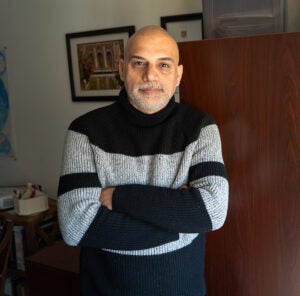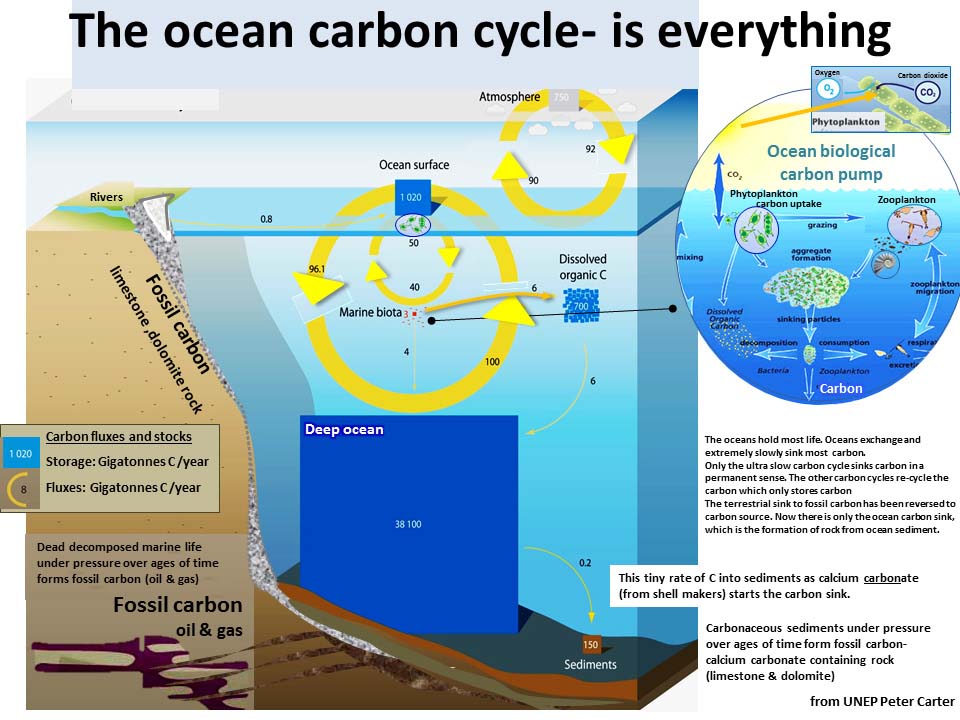University of Rhode Island (URI) received funding from the U.S. Department of Energy in partnership with the University of Kentucky to develop an ocean-faring electrochemical direct ocean capture system for carbon. This technology would be using renewable energy to drive a device that removes carbon dioxide (CO2) from ocean water.
Climate change is driven by an unprecedented concentration of carbon dioxide in the atmosphere. While it is understood that increasing efforts to reduce emissions plays a key part in stopping short of a 2°C climate warming, it’s also evident some amount of carbon removal from the atmosphere is necessary to meet these goals. The ocean is the largest store of carbon on earth, 16 times as much carbon as the terrestrial biosphere, and it has already absorbed some 25% of fossil fuel emissions. However, human activities are overwhelming this natural process. While it is essential to have carbon in this ecosystem, increasing greenhouse gas emissions have affected the health of the ocean – warming and acidifying seawater – causing detrimental changes to life under water and on land, and reducing the ocean’s ability to absorb carbon dioxide. Therefore, carbon capture research in the ocean is crucial for mitigating climate change.
Given URI’s prestige with not only ocean studies but expertise in clean, ocean-renewable energy along with University of Kentucky’s Institute for Decarbonization and Energy Advancement, the partnership is a superb match.
The Project
The task is to address the challenge of achieving a durable and scalable direct ocean CO2 removal process using electrochemistry. Electrochemical CO2 removal from concentrated sources like power plants has proven feasible, but now must be proven viable in a marine environment. Coastal waterways and beyond are utilized by many organizations for various purposes from transportation, fisheries and renewable energy to protected areas for wildlife and research purposes. Taking that into consideration, along with a source of renewable energy and innate understanding of the environment are all factored into this project and why URI expertise is so important to this research.
The Site
The first objective of this project is to develop a feasibility and conceptual design that envisions how such a technology could operate on the Northeast Continental Shelf. The feasibility study includes detailed guidelines for the following items: (1) site selection, (2) major equipment specifications, (3) preliminary facility design and general arrangement, (4) cost estimates, and (5) pilot-project schedule.

URI students from the Department of Ocean Engineering and Graduate School of Oceanography, led by Professors Reza Hashemi and Brice Loose, will conduct an in-depth analysis to determine the best locations for installation of an electrochemical CO2 removal system (DER) in proximity to wind, wave, or other renewable power sources. The study will also determine the optimal siting conditions for the DER, considering the specifics of biology and ocean chemistry along the mid-Atlantic Bight.
Researchers at URI are intimately familiar with coastal ocean resources on the Northeast Shelf of the Atlantic Ocean, after completing multiple ocean surveys relating to fisheries, underwater archaeology and renewable energy. Hashemi is an expert in ocean renewable energy and coastal engineering. “It’s very complicated to put something in the ocean. The ocean doesn’t have an owner and we need to try to find areas with minimum conflict. The siting of this technology also highly depends on the power requirement in relation to available, feasible ocean-energy resources” said Hashemi.
The analysis will explore permitting opportunities and roadblocks, conduct an ocean energy characterization at the site of interest based on wind speed and wave potential, and recommend suitable renewable energy devices, and marine spatial and water quality impact parameters that will ultimately allow for a detailed and transparent understanding of the technology by regulators and stakeholders.
The Technology
The second objective is to design and validate the performance of the depolarizing electrochemical reactor (DER) in the process of CO2 removal, and the final objective is to evaluate the technical, economic, environmental, and societal impacts of using the proposed technology on the Northeast Shelf.

“This is a well-studied area, a lot of the necessary factors to consider for this project such as water chemistry and ocean life are known, which makes it an ideal site to implement this new technology,” said Loose, who works in both marine and atmospheric chemistry and physical oceanography with a joint appointment in ocean engineering.
The water itself needs to be filtered to remove organic matter before entering the electrochemical reactor to separate the carbon molecules and recombine the water to safely enter back into ocean.
“These technologies are important, and the more effective they can be the better because in order to reach a zero-emissions goal, this industry has to achieve a scale that rivals the present-day oil industry,” said Loose.
The project is currently in its first phase. The total award in all phases is $4M, but the initial award is for $250K, of which $62.5K is slated for URI.
“This is a well-studied area, a lot of the necessary factors to consider for this project such as water chemistry and ocean life are known, which makes it an ideal site to implement this new technology.”

